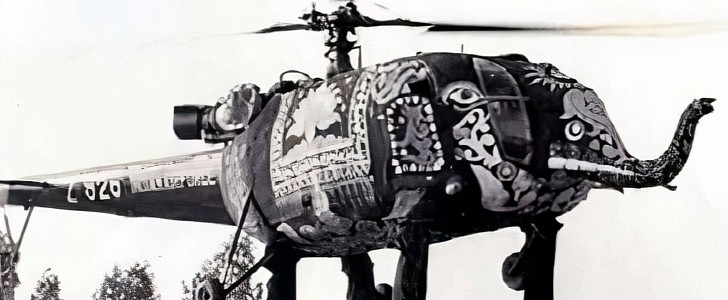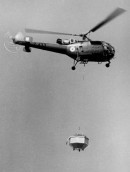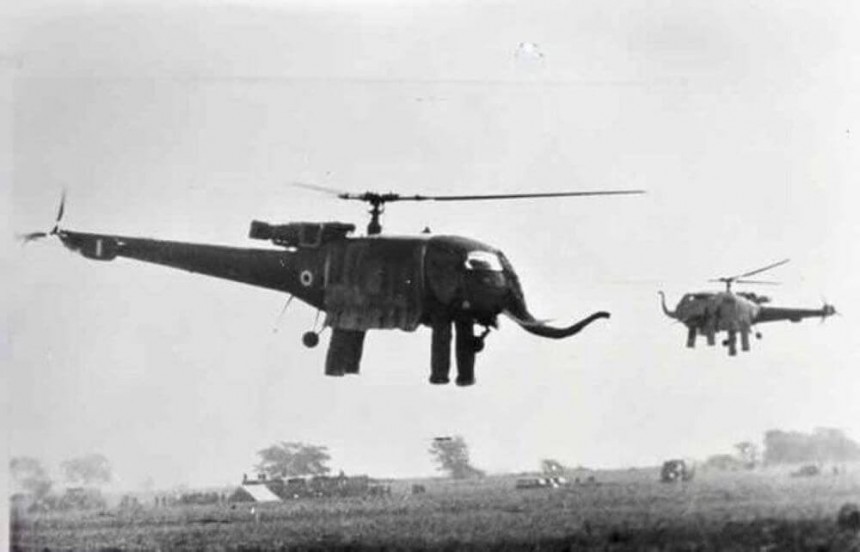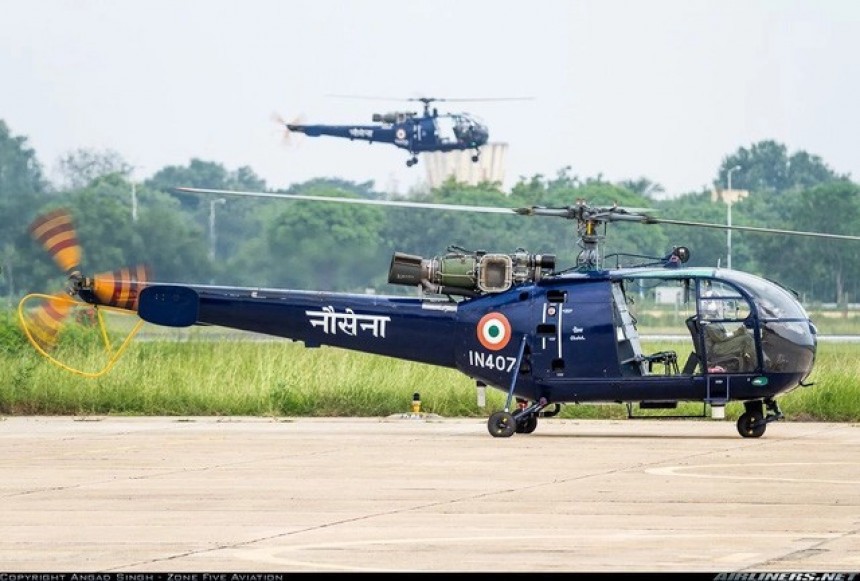For one Republic Day parade in the early '70s, this hilarity paid homage to India's ancient culture in a flamboyant fashion. Four decades ago, the Indian Air Force awed the crowd at an airshow with a flying elephant. And no, it wasn't Dumbo, the big floppy-eared cute baby proboscidean, but the pride of the Indian air warfare industry: the French-licensed Indian-built Chetak helicopter.
Cleverly – and painstakingly – dressed as a ceremonial elephant, the flying apparatus hovered above the cheering audience. To pull this off, a tailor had been recruited and brought to the airbase where the choppers were stationed. The man's task was obvious: to construct the enormous garments. It took over three weeks to take the sizes, cut, sew, seam, and fit the maharajah-style regalia on the helicopter's bubble and half of the tail.
The elephant apparel, including the trunk, tusks, and hollow legs, was made from colorful, carefully chosen fabrics. Had it been too light, it would have been torn apart mid-flight by the strong air currents from the propeller. Too heavy, and it would have made the flying maneuvers unacceptably dangerous to perform above a live audience.
And while it all looks fun and games from beyond, a keen eye might notice the challenges raised by flying this impromptu device. Apart from a very narrow area on the front window, the pilot's view was completely obstructed. The dangling caparison made maneuvering and controlling the flying pachyderm-look-alike even more difficult. Confined to speeds around 45 knots (83 kph) by the antics laid over it, the helicopter had no room for error. An errant piece of cloth caught in its boom or main rotor would have immediately spelled disaster.
However, the flying ace at the machine's stick was Group Captain Birji Mohan Datta, who also served as the 116 Helicopter Unit Wing Commander. Keeping his aircraft steady ten feet (three meters) above the ground, the improvised "mahout" enthralled the audience for about five minutes with a jiggled mimic of an elephant dance.
Over the years, the Chetak put on several other carnivalesque fittings – one time as a golden (and flying!) fish in the 70s, and a second time as a Dodo Bird, in 1993, in Mauritius, again during the country's national day celebrations.
Based on the Alouette III, the Indian two-ton class aircraft entered domestic production in 1965. The seven-seater Chetak helicopter is a light, adaptable, multi-role, multi-purpose, rugged machine that wrote history for the Indian air (and space!) industry.
The Turbomeca Artouste IIIB turboshaft engine poses versatile capabilities that deem the helicopter suitable for multiple civilian operations. Aerial ambulance, aerial survey and patrolling, search and rescue, offshore operations, cargo transport, and external lift missions make the Chetak a true workhorse… errrr, work elephant(?) of the skies.
Built by Hindustan Aeronautic Limited, over 350 of the French Alouette-derived Chetak took to the skies. The engine's output is 420 kW (563 hp) for takeoff and 405 kW (543 hp) for sustained flight (limited by the gear reducer). Removing the limiter boosts sea level ratings are 640 kW (858 hp) for takeoff and 515 kW (690 hp) for flight.
With a maximum takeoff weight of just 4,850 lb (2,200 kg), the helicopter can fly its seven occupants 340 miles away (540 km) at a cruise speed of 100 knots (185 Km/h). The top speed is 110 knots (210 kph), and the designed service ceiling is 10,500 ft (3,200 meters). However, the Indian Air Force set a historical record with this aircraft when it flew at 18,875 ft (5,753 meters) in the Himalayas, landing on the Siachen Glacier, on October 6th, 1978. Out of safety precautions, the present-day maximum allowed altitude is set to 10,000 ft (3,000 meters) above sea level.
The elephant apparel, including the trunk, tusks, and hollow legs, was made from colorful, carefully chosen fabrics. Had it been too light, it would have been torn apart mid-flight by the strong air currents from the propeller. Too heavy, and it would have made the flying maneuvers unacceptably dangerous to perform above a live audience.
And while it all looks fun and games from beyond, a keen eye might notice the challenges raised by flying this impromptu device. Apart from a very narrow area on the front window, the pilot's view was completely obstructed. The dangling caparison made maneuvering and controlling the flying pachyderm-look-alike even more difficult. Confined to speeds around 45 knots (83 kph) by the antics laid over it, the helicopter had no room for error. An errant piece of cloth caught in its boom or main rotor would have immediately spelled disaster.
However, the flying ace at the machine's stick was Group Captain Birji Mohan Datta, who also served as the 116 Helicopter Unit Wing Commander. Keeping his aircraft steady ten feet (three meters) above the ground, the improvised "mahout" enthralled the audience for about five minutes with a jiggled mimic of an elephant dance.
Based on the Alouette III, the Indian two-ton class aircraft entered domestic production in 1965. The seven-seater Chetak helicopter is a light, adaptable, multi-role, multi-purpose, rugged machine that wrote history for the Indian air (and space!) industry.
The Turbomeca Artouste IIIB turboshaft engine poses versatile capabilities that deem the helicopter suitable for multiple civilian operations. Aerial ambulance, aerial survey and patrolling, search and rescue, offshore operations, cargo transport, and external lift missions make the Chetak a true workhorse… errrr, work elephant(?) of the skies.
Built by Hindustan Aeronautic Limited, over 350 of the French Alouette-derived Chetak took to the skies. The engine's output is 420 kW (563 hp) for takeoff and 405 kW (543 hp) for sustained flight (limited by the gear reducer). Removing the limiter boosts sea level ratings are 640 kW (858 hp) for takeoff and 515 kW (690 hp) for flight.










